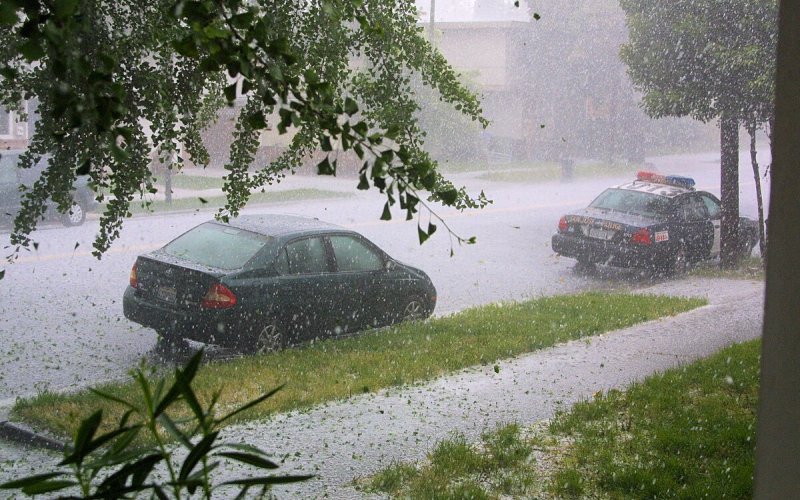Brian Tang Explains the Science Behind Hailstorms in The Conversation

By Mike Nolan
ALBANY, N.Y. (July 2, 2024)—How do hailstones get so large, and are hailstorms getting worse?
Brian Tang, an associate professor in the Department of Atmospheric and Environmental Sciences, studies extreme weather systems, including severe thunderstorms.
Last week, he published an article in The Conversation that explains the science of hail, including how it forms, how it can grow so large, and the impacts of climate change on hail size and the frequency of storms.
In May, hail the size of grapefruit shattered car windows in Johnson City, Texas. Even larger hailstones have been documented in South Dakota, Kansas and Nebraska.
“As hailstones get larger, their energy and force when they strike objects increases dramatically,” Tang said. “Baseball-sized hail falling from the sky has as much kinetic energy as a typical major league fastball. As a result, property damage — such as to roofs, siding, windows and cars — increases as hail gets larger than the size of a quarter.”
Experts believe that increasing temperatures are creating more thunderstorms with strong updrafts, which can lead to more—and larger —hailstorms.
In 2019, Tang led a group of atmospheric scientists who analyzed 38 years of weather data — from 1979 to 2017 — to determine how many days per year had favorable conditions for large hail, greater than the size of a golf ball, across the U.S.
Consistent increases were observed east of the Rocky Mountains, including a 10 to 15-day uptick in parts of the Central Plains and Midwest. Most of the Northeast also experienced an increase of about three to eight days.
“A lot of people ask whether the rise in hail damage is tied to climate change,” Tang said. “My colleagues and I analyzed four decades of hail environments and found that the atmospheric ingredients to produce very large hail — larger than golf balls — have become more common in parts of the central and eastern U.S. Other studies that considered formation factors of hail-producing storms or looked at radar estimates of hail have found limited increases in large hail, predominately over the northern Plains.”
The University at Albany recently rejoined The Conversation, a nonprofit, independent news organization, that publishes trustworthy and informative articles written by academic experts for the general public and edited by a team of journalists.
Already this year, UAlbany researchers have published more than a dozen articles in The Conversation ranging from an explainer of heat index warnings to how the younger generation is impacting polarization in American politics.
Faculty interested in writing for the publication are encouraged to reach out to the Office of Communications and Marketing.





